

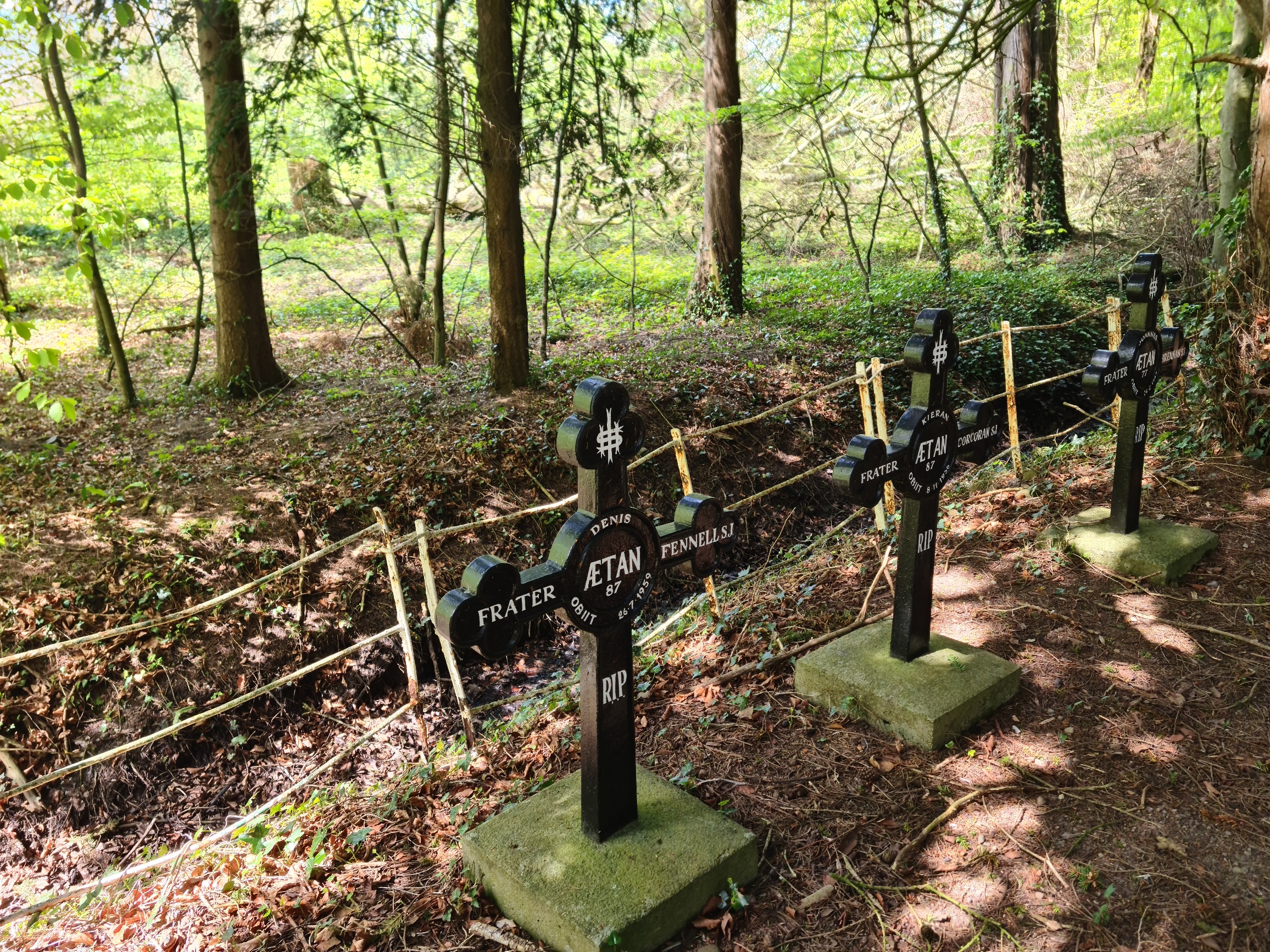
There’s an impressive gate to Clongowes Wood College, a Jesuit-run private boarding school for boys in Clane, Co. Kildare. The Jesuits bought the fifteenth-century castle along with 219 acres in 1814 for the princely sum of £16,000. The alumni list includes the likes of James Joyce, Oliver St John Gogarty, and Edmund Dwyer-Gray, 29th Premier of Tasmania. Leaf through their book of notable Clongownians – it’s worth a read. The Liberator, Daniel O’Connell, wasn’t a student himself, but he did send his four sons there. Other Old Clongownians (OCs) include the one and only The O’Rahilly, a founding father of the Irish Volunteers, who learned his way around literature in Clongowes. As did Thomas Francis Meagher, who lived a colourful life convicted of treason and commuted to life imprisonment in Van Dieman’s Land, ending up as Union officer in the American Civil War only to drown accidentally in the Missouri River. I wonder if he was there at the same time as Dwyer-Gray. That’d have been interesting.
I’ve driven through that gate lots of times over the years and never realised that there’s a small cemetery to the left.
The Community Cemetery.
It’s here that the many Jesuits who taught in the college are buried.

There’s an outer and an inner section, as it’s been extended in recent years. The markers line up chronologically in order of date of death.
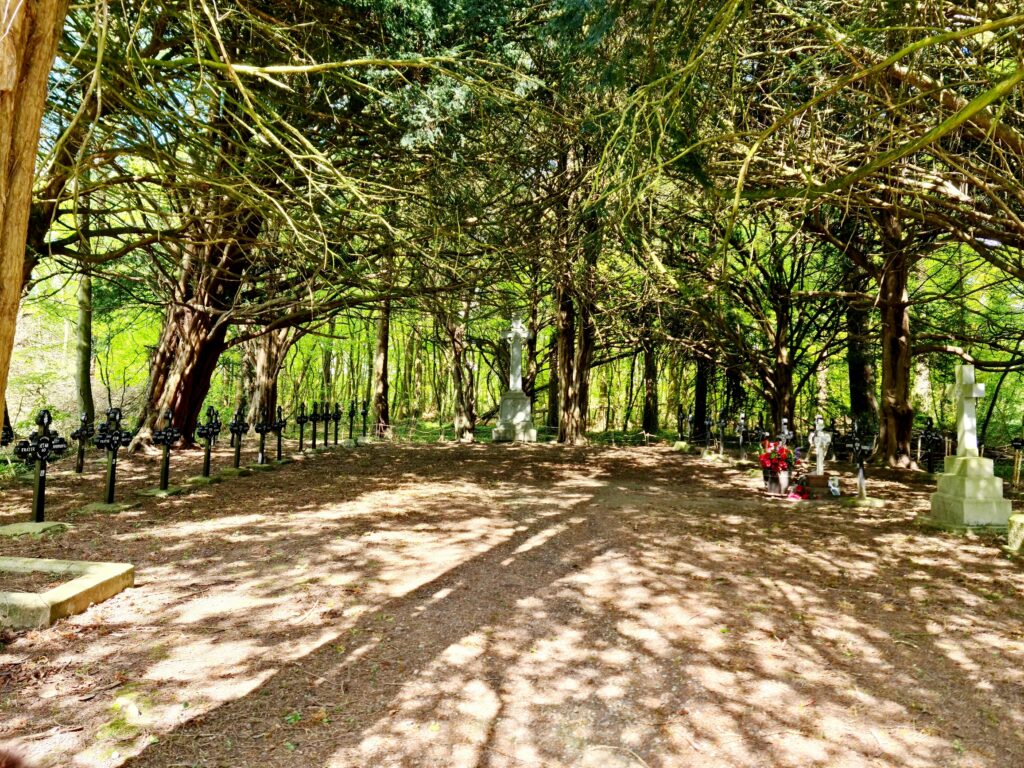
The iron headstones belonging to the Jesuits are simply engraved. I had to do some reading on this but I’m fairly confident that Schol – is short of Scholastic – someone in training to become an F. Pater (Priest/Reverend Father). Then there’s the Frater (Brother). I hadn’t known that Jesuits can be priests or brothers (the former is ordained to give the sacraments, the latter isn’t).
When Ignatius of Loyola and his companions became formally recognized as a religious order by Pope Paul III in 1540, each of them was an ordained priest. Given how important hearing Confessions was in their early ministry, and how they already had a remarkable reputation as a group of “priests, learned and poor,” this small, close-knit band of the Society of Jesus was imagined as a society of priests. Only a few years later in 1546, however, Ignatius once again approached Pope Paul III. The popularity of the Jesuits had grown so quickly, and so many ministries were being taken on, that help was needed. Paul III allowed the Society to admit both spiritual and temporal “coadjutors” (helpers). The coadjutors were to make the same vows of poverty, chastity, and obedience as other Jesuits, to be under the authority of Ignatius (and other Jesuit superiors), and to “share in all the good works which will be done in the Society.” The temporal coadjutors, who aided in the physical maintenance (artistically, financially, and administratively) of the various ministries, today are called Jesuit Brothers.
I had to look up AET AN, too, and I think it’s at the age of. Or at least the AET is. I’m not sure where the AN comes into it.
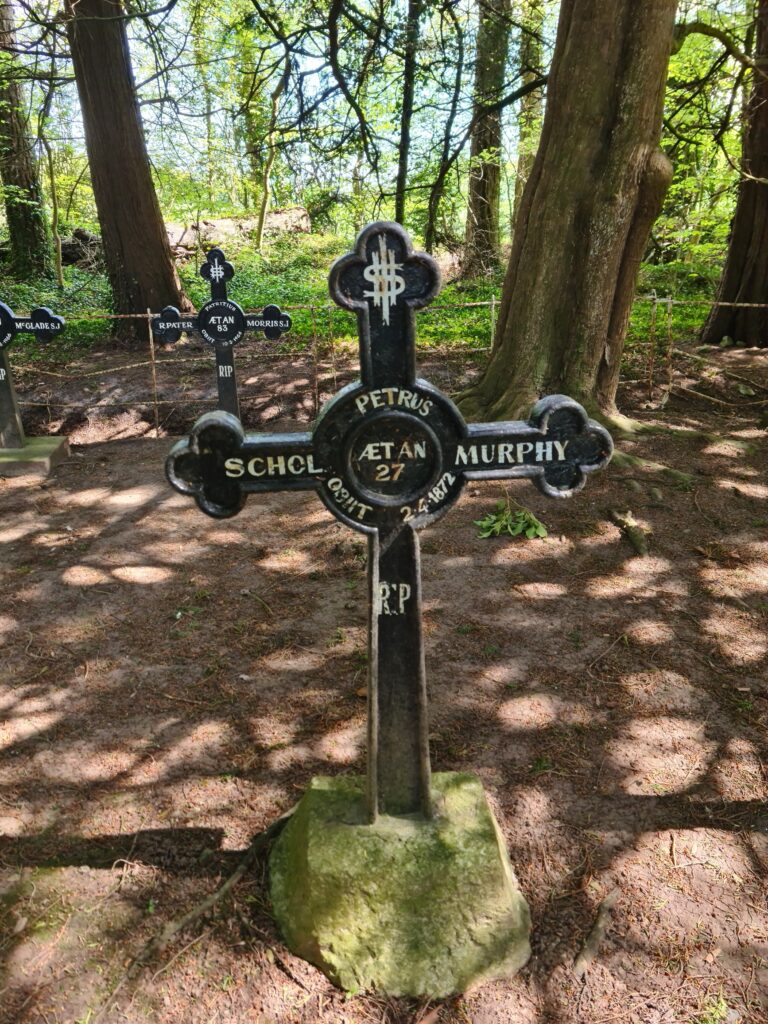
Some headstones are more ornate but still plain. They belong to pupils of the college. I can find little online about them. The first pupils spent 11 months of the year in the college, only going home for holidays for the month of August. The annual fee back then was 50 guineas, equivalent to about £5000 today. And, I’m sure, if the fees were still that, the school would be oversubscribed. The annual fees for 2024 are more in the region of €20,000.
The history of the school is fascinating.
On May 18th 1814 the first pupil, James McLorinan of Dublin was admitted to the school. His parents were drapers and belonged to the evolving prosperous class of Catholics who were willing to take advantage of the classical education, which Fr Kenney proposed to offer.
And the college’s page gives a great explanation of Gravel football, the presursor to the rugby Clongowes is famous for today.

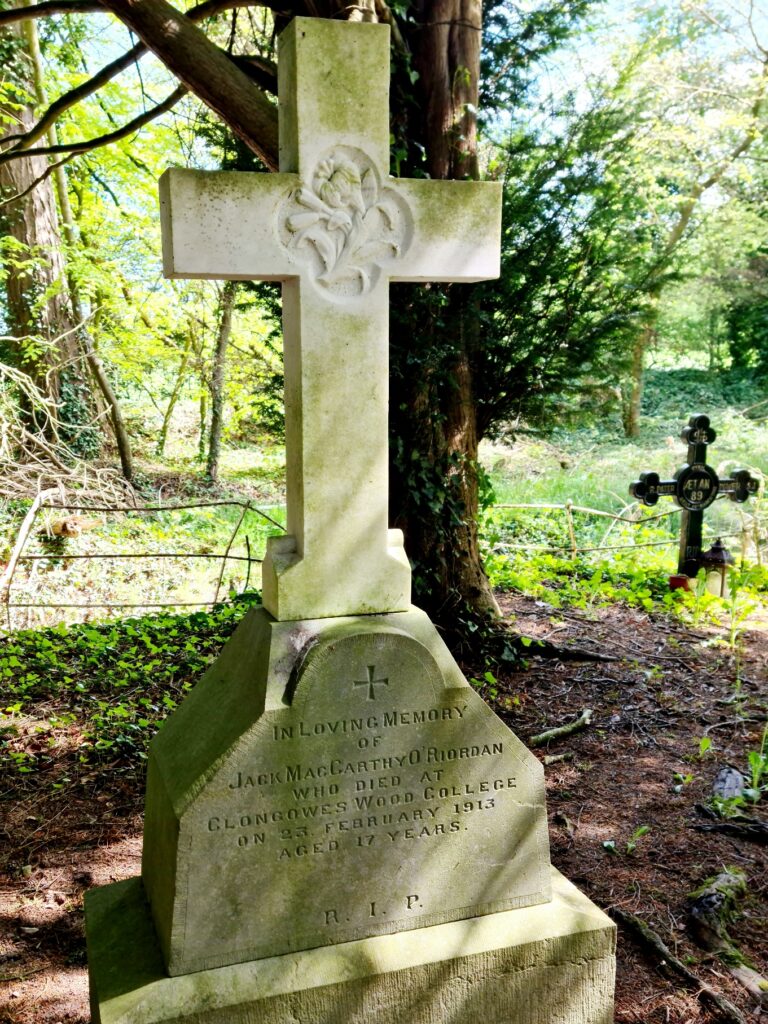
Others belong to lay teachers, perhaps single with no families, who opted to be buried on the grounds. Or perhaps not buried, but remembered.

If a place could be described as scholastic, this would be it. There’s a wealth of knowledge buried in this small plot of land just inside the Pale (that part of Ireland directly under the control of the British government).
By far the most famous resident (or former resident) is Bl. John Sullivan. I wrote about him a while back, over on Unpacking. His iron cross is white and the only one with flowers. His inscription includes the word Translatum – which means removed. His body was removed to St Francis Xavier’s Church on Gardiner Street in Dublin in 1960. And while his body might no longer be in this community cemetery, his spirit is very much present in the people who pray to him.
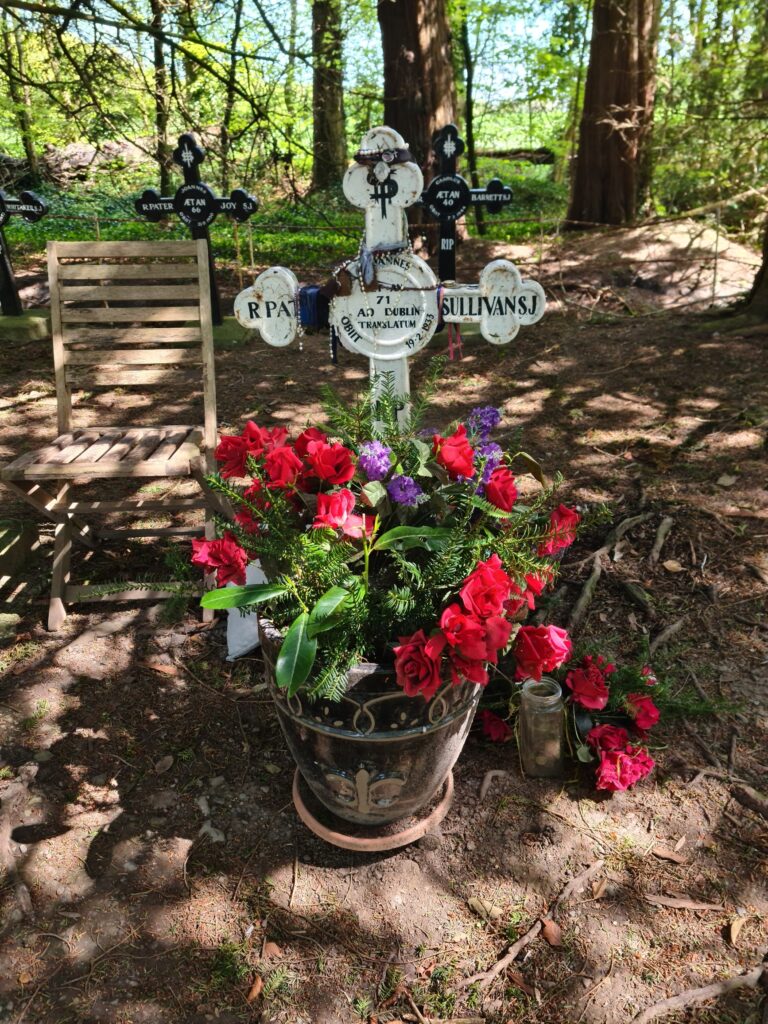
Thanks to MO’N for the tour. Much obliged.